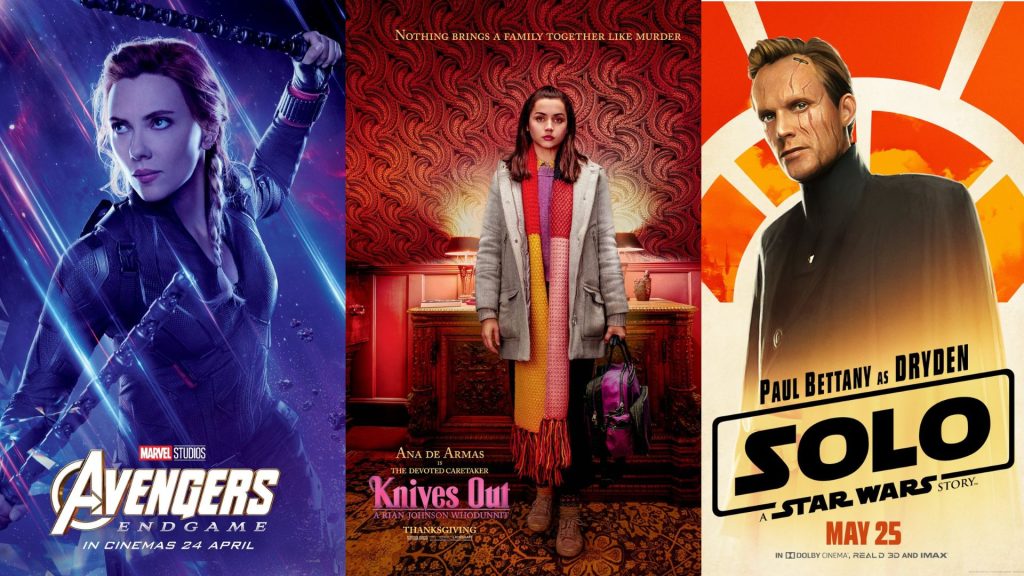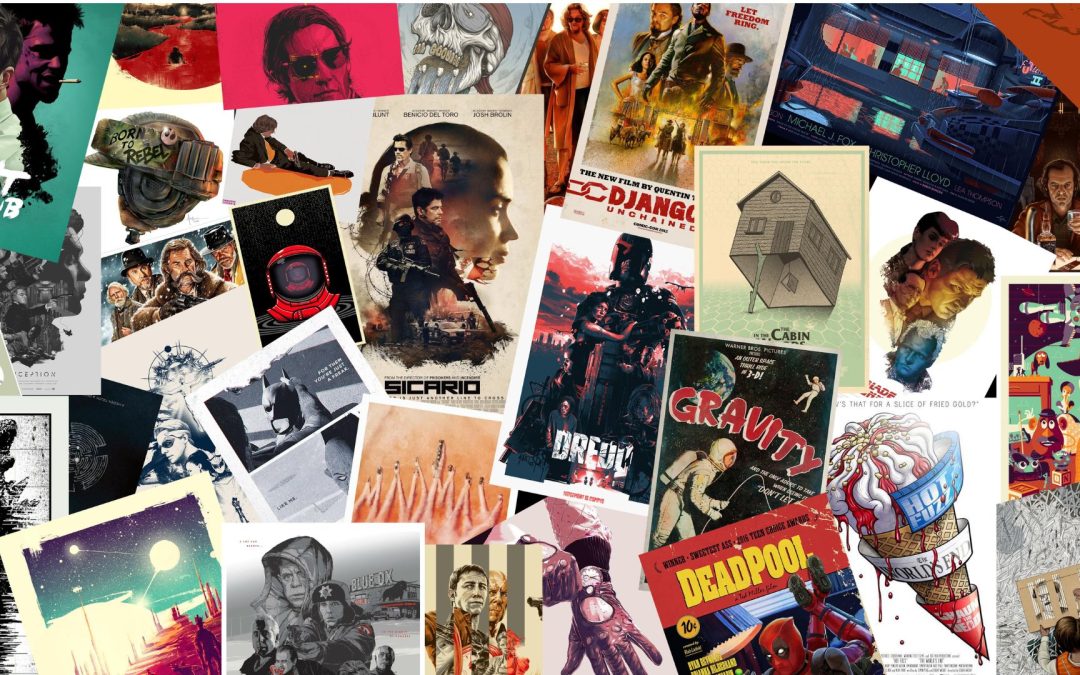How do you find out about latest movies? Perhaps you see a teaser trailer on social media, or catch an interview with the stars on late night, or maybe a poster grabs your attention as you drive by a theater. How did that poster catch your eye from all the way across the street? Movie posters are one of studios main ways to market and advertise their films. They are meant to be visually aesthetic and command you’re attention. They might draw you in with a striking color pallet or an actor you love, to convince you to see this film. Through a quick glance you can determine the film’s genre, its tone, and some crucial details, all of which can be credited to a good poster design. Often times studios follow a formula with their posters, with conventions for when they are released, what’s on them, and even how they are printed.
Typically there are four varieties of official posters a studio might release leading up and following the release of a film.
1. Teaser

Posters for “Batman and Robin” (1997), “Finding Dory” (2016) and “Skyfall” (2012)
A teaser poster is the initial poster that the studio will release, often for bigger budget features, the teaser poster will contain limited information. Maybe just the title of the film or a single character without any plot details being revealed. They are typically distributed before the film is completely finished to help generate hype and get people talking. The Finding Dory poster includes the tag line “She just kept swimming…” calling back to her famous phrase from the first film, and getting audiences who are fans of the first one to return. On the poster for Skyfall no where does it say in words that this is a James Bond movie, but through the simplistic design we can instantly tell who this movie is about. The smoking gun and the numbers 007 we have come to associate with Bond over the years, so their inclusion on this poster clues the audience in that this is a James Bond film.
2. Main or Final Poster

Posters for “Mean Girls” (2004), “Mama Mia!” (2008) and “Get Out” (2017)
The main poster or final poster is the primary poster released by the studio. It will contain more information than the teaser will with the lead and supporting actors’ names, release date, and production company details. They will often make use of specific color pallets, like this Mean Girls poster whose dominant color is pink. Or use a framing devise on the Get Out poster where there are several images fragmented by broken glass. They will always feature more of the cast than a teaser poster, and many (including these examples) will feature a tag line.
3. Character Poster

Posters for “Avengers: Endgame” (2019), “Knives Out” (2019) and “Solo: A Star Wars Story” (2018)
Character posters are additional promotional posters a studio might release that feature a single character from a film. It might be to showcase an ensemble cast or market a particular famous face. These posters will likely prominently feature the character’s and actor’s name in order to appeal to that actor’s fanbase. For example people who love Scarlett Johansson’s work may be more inclined to see “Avengers: Endgame” even if they aren’t a big super hero movie fan, because she is in it. Character posters might also feature a tagline for the character shown that might give us a bit of insight into the story, like on this Knives Out poster Ana de Armas’s character is described as “The Devoted Caretaker.”
4. Awards Poster

Posters for “The Hopeful” (2011), “Her” (2013) and “A Beautiful Day in the Neighborhood” (2019)
Review or award posters will contain excerpts from critics reviews or the awards the film has been nominated for or has won. Around award show season a film might be re-released with an awards poster indicating its accolades, enticing people to see it again or for the first time. Often times this format will also be used on DVD covers for the same reasons. This can give an indication of what type of film this is and what people are saying about it. “The Hopeful” poster has several awards from film festivals indicating its success before a theatrical run and a review from ESPN indicating it’s relevance in the sports world. Where as “A Beautiful Day in the Neighborhood” has a collection of quotes from critics to emphasis the film’s tone.
Movie posters not only make for a cool collectable, they are crucial in a studio’s marketing strategy. A poster might be all you need to convince you to watch a film, so they need just the right amount of information. Big budget films might release all four of these posters, where as a film with a smaller marketing budget might only have one or two variations of the main poster. A detailed analysis of a film’s posters can give great insight on what it is about, what a studio wants you to think about their film or a better understanding of how to market your own films.


Recent Comments